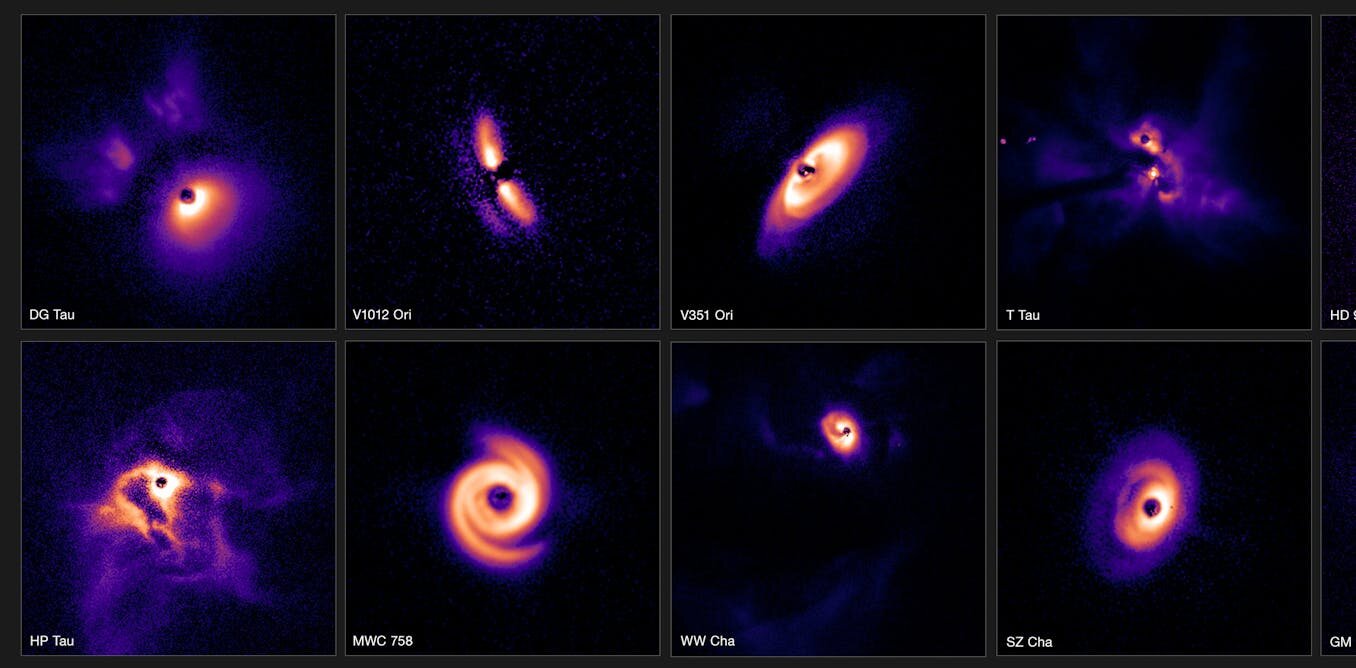A huge number of exoplanets have been discovered outside the Solar System. There are many bodies among them, the analogues of which we do not have. Scientists believe that the answer to the question of how they form can be found in protoplanetary disks.

Planets in other systems
In recent decades, astronomers have discovered more than 5,000 planets orbiting other stars — the so-called exoplanets. Now we know that there are so many of them that you can look at any star in the night sky and be almost sure that planets orbit around it. But what do these planets look like?
The first planet that was discovered around a sun-like star was a shock to us. It was the so-called hot Jupiter, a massive gas giant that orbits its parent star in such a narrow orbit that the duration of the year on it is only four days. This is indeed an alien world that has no equal in our Solar System.
From this first revolutionary discovery, astronomers went further and found densely clustered super-Earth systems, rocky planets several times more massive than Earth, as well as amazing gas giants in century-old orbits around their parent star. Among the many planetary systems that we have found, none is similar to our Solar System. In fact, most of them are very different.
Protoplanetary disks
To understand how all these different systems arose, we should go back to the very beginning. These are majestic disks of dust and gas that surround the youngest stars. These are the cradles from which new planetary systems will eventually emerge. These disks are huge objects, their length is several hundred times the distance between the Earth and the Sun. But they seem tiny in the sky.
This is due to the fact that even the nearest of them, which are practically in our galactic courtyard, are 600 to 1600 light-years away from us. This is a tiny distance if you consider that the Milky Way galaxy has a diameter of over 100,000 light-years, but it still means that light, the fastest thing in the universe, takes up to 1,600 years to reach us from there.
To observe these disks, the most modern and largest telescopes are needed. And we need sophisticated tools that can correct the atmospheric turbulence blurring our images. This is a great engineering feat, because the latest generation of tools have only been available for a dozen years.
New findings
Using the Very Large Telescope (VLT) of the European Southern Observatory and the Sphere extreme adaptive optics camera, scientists began to study young stars located nearby. The team, consisting of scientists from more than ten countries, could observe over 80 young stars in all details — the results were published in a series of articles in the journal Astronomy and Astrophysics.
All images were taken in near infrared light, invisible to the human eye. They show light from distant young stars reflected from tiny dust particles in the disks. This dust is like sand on a beach, and over time it collects, forming new planets.
Astronomers have discovered an amazing variety of shapes and outlines of these planetary nurseries. Some of them have huge ring systems, others have large spiral arms. Some of them are smooth and calm, while others find themselves in the epicenter of the storm when dust and gas from the surrounding star-forming clouds rain down on them.
Although we expected some diversity, our study showed for the first time that this was true even within the same star-forming regions. Consequently, even planetary systems that form in the same area may be completely different from each other. The discovery of such a wide range of disks suggests that the huge variety of exoplanets discovered so far is a result of the fact that the clouds from which they formed were very different from each other.
Unlike the Sun, most stars in our galaxy have companions — two or more stars orbiting a common center of mass. Considering the constellation Orion, we have found that stars in groups of two or more luminaries are less likely to have large protoplanetary disks than single stars. This is useful to know when hunting for exoplanets. Another interesting discovery was how uneven the disks were in this region, indicating that there may be massive planets that bend the disks.
According to phys.org
Follow us on Twitter to get the most interesting space news in time
https://twitter.comne/ust_magazine


